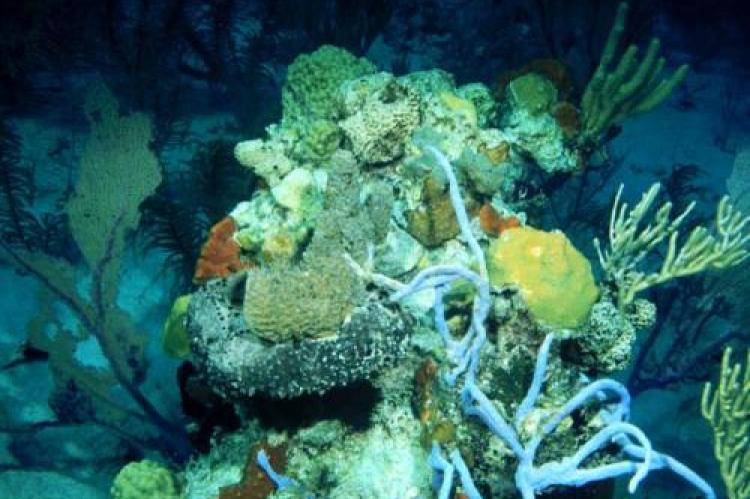Sponges regenerate the reefs
Although sponges inside the cavities of coral reefs take up a lot of dissolved organic material, they scarcely grow. However, they do discard a lot of cells that in turn provide food for the organisms on the reef.
Dutch researcher Jasper de Goeij investigated how caves in the coral reef in Curacao and Indonesia ensure the reef’s continued existence.
Caves in coral reefs are the largest and least well known part of the reef. Until now it had been assumed that sponges populating these caves could only eat by filtering the non-dissolved particles from the seawater. However Mr.de Goeij's as research demonstrated, the caves contain far more dissolved material than non-dissolved material.
The filter inside the reef
Cave sponges take up enormous quantities of dissolved organic material from seawater. Question was do they also process it? De Goeij was able to reveal that the sponges process forty percent of the material and take up sixty percent. This should lead to a doubling of the sponges' biomass every two to three days. However, cave sponges scarcely grow. The caves are so densely populated that there isn't much space to grow.
Rapid rejuvenation
Instead of growing the cave sponges rapidly rejuvenate their filtration cells and discard their old cells. This short cell cycle is unique for multicellular organisms and to date was only known to occur in unicellular organisms. The production and breakdown process of the sponge cells mirrors that in the human intestinal tract.
Eat and be eaten
Coal reef regenerates itself in a remarkable manner. The algae and corals on the reef produce dissolved organic material. Before this material enter the open ocean it is taken up by sponges which filter enormous quantities of water and convert the ingested dissolved material into particles. These particles are in turn consumed by the algae and corals on the reef. In this manner, the various inhabitants of the reef facilitate each other's survival.





























